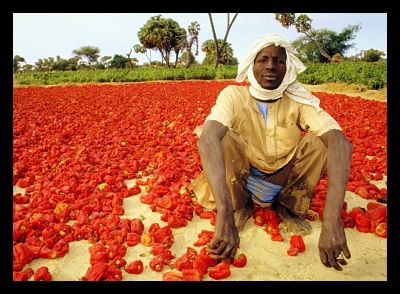Self-Sustaining Agriculture for Nigeria?

In a country where 60% of the population are employed as farmers, it is a disheartening fact that Nigeria is not agriculturally self-sustainable. Not only does the country lack the level of food production needed to feed its growing population, but the shortfall is so great that Nigeria is the world’s largest importer of rice, spending $11 billion a year on food importation.
Despite some 100 million farmers, out of a population of 167 million, the majority practice subsistence farming. Less than half of Nigeria’s arable land is currently being used for food production, and some sources claim less than 10% is used optimally. Additionally, many of these farmers still aren’t employing modern methods and tools.
Without government intervention, this is unlikely to change soon. For one, the farming population is aging, despite 70% of Nigeria’s total population being under the age of 30. Youth are moving to the cities rather than remaining in rural areas, and this demographic shift takes a toll on farms as the potential workforce is depleted. Additionally, banks are reluctant to lend money to farmers, as returns on investments are slow. A system of government aid or microcredit may be necessary to allow farmers to update their equipment and buy fertilizer, and so increase their yields.
However, it is a lack of infrastructure in the country that might be the biggest contributor to the constant shortcomings in food production. Roads are often unsuitable for transportation, and water and electricity provision are inconsistent. The lack of suitable roads leads to a huge amount of waste as crops are unable to be transported in a timely manner. According to Nigeria’s Farms Minister, Akinwumi Adesina, 45% of the country’s tomato crop is lost every day, simply because farmers are unable to get them to the market.
The problems in agriculture stems partly from the discovery of oil in Nigeria in the 70s, and the subsequent shift away from farming. But more often it appears to be inefficient methods and insufficient workers. Crops often go unharvested, or yields simply aren’t high enough to provide a surplus.
Nigeria’s president, Goodluck Jonathan, has targeted 2015 to eliminate the need to import rice. With Nigeria’s population quickly swelling, though, it will take more than a simple increase in yields to meet the demand. Infrastructure will need to be improved, and a modernization of the industry must take place.
With the country set to surpass the population of the United States before 2050, this revitalization will be crucial to its future success.
– David Wilson
Sources: The Economist
Photo: IFAD
